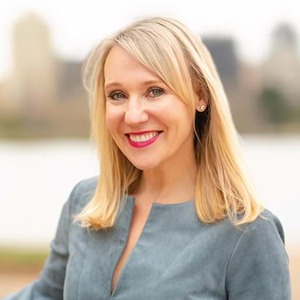
Ikigai: The Defining Act of Bold Brand Purpose
Today’s brands feel increasingly pressured to take a stand on everything. To address inequalities. To speak up frequently. To act on societal matters.
Unsurprisingly, these consumer expectations prove challenging to brands. It’s not unreasonable to ask, “is it not enough to provide excellent products and services?”
The reality is that brands cannot speak and act on every social issue that arises, and people don’t want them to. “The Bravery Mandate,” WE’s latest Brands in Motion report, found that 72% of respondents surveyed would rather see brands make long-term investments in one issue or cause rather than switch causes each year.
The demand from the public is clear: People want brave, focused action from brands. That’s why it’s more important than ever for brands to look within and hone a singular bold purpose ?— its ikigai.
WHAT IS IKIGAI?
Ikigai, a reason for being, is the Japanese concept for finding a sense of purpose. Although often used for individuals, brands can benefit from this esoteric framework to identify and refine their purpose. Ikigai is the intersection of four fundamental questions:
What does the world need for your brand?
What is your brand good at?
What do you love doing?
What can you be paid for?
Brands that carefully consider all these four questions find themselves at a powerful intersection, a defining force for purpose clarity and action. It’s at the heart of bold purpose.
THE POWER OF IKIGAI
Using ikigai as a guide naturally narrows the scope of perspective, provides absolute focus on what’s important to your community (both internally and externally), and enables a discipline to distraction.
Increased focus enables brands to solve problems in a more targeted way and enable a deeper impact, instead of spreading their resources thin across multiple areas. This laser-like focus also naturally leads to an ability to react quickly to external events when necessary. New Zealand’s ASB Bank, which commits itself to accelerating financial progress for New Zealand’s business community and its citizens, is a great example of this. When small and medium enterprises (SMEs) in the country were severely affected in the early days of the pandemic, the bank pivoted quickly by launching its “Borrow the All Blacks” initiative, “lending” famed players from New Zealand’s leading rugby team to appear in ads for a hundred SMEs. The bank committed close to US$2 million to promote these ads for months afterward. By far, the most impressive aspect was that the entire initiative was rolled out in a matter of weeks after COVID-19 was discovered in the country, highlighting how ASB Bank’s stakeholder-specific focus enabled it to help its intended audience quickly and effectively.
IKIGAI AND BRAND PURPOSE
With people’s demands for brands rising to all-time highs this year, leaders searching for their brand’s ikigai may not know where to start. Ikigai is an iterative journey requiring leaders to interrogate their current purpose plans and goals. It demands a rigorous, committed and authentic process.
Defining core values: Core values are the cornerstones of organizational performance, culture and behaviors. They are the very foundations that truly good brands can be built. Selecting the right value is inherent for some, more purposeful for others and necessarily subjective for all. There is no one-size-fits-all approach, and taking the time to consider the value your organization brings to the world, and the people within it, becomes the navigation for effective decision-making.
Owning your cause: Granted, it’s easier to follow the crowd and be swept away by the trending hashtag. The power of finding the right issues and causes to support is one of discipline; not what you can do but why. To achieve authenticity and true impact, the relevancy to your brand and all its stakeholders, the ability to motivate and activate your audiences, and a commitment to genuine investment are required.
Brands in Motion data shows that audiences expect brands to focus on issues relevant to them. For the past eight years, vacation rental platform Airbnb has funded Airbnb.org, a nonprofit organization dedicated to providing temporary housing for people in times of need, opening doors for refugees, disaster victims and relief workers worldwide. Recently, it offered to house 20,000 Afghan refugees across the world, wholly funded through contributions by Airbnb and donors to its Refugee Fund. This work and impact were only possible because the brand could galvanize its global network of Airbnb hosts who shared its beliefs.
Showing restraint on hot button issues: This is the time to edit ruthlessly, identifying a singular vision and understanding that it’s impossible to be everything for everyone. Setting boundaries is crucial to removing distractions, especially when stakeholders are increasingly expecting stable, long-term investments from brands.
Constant reinvention: Ikigai is not a static state. Leaders need to evaluate their plans and adapt, especially in times of constant disruption. Societal shifts are accelerating, with nearly three out of four respondents of our Brands in Motion report saying brands should reassess their communications and corporate policies in light of social issues at least every six months. Reevaluating should involve check-ins with stakeholders, both internal and external.
LIVING WITHIN THE INTERSECTIONS
As expectations for brands continue to grow, consumers want leaders to engage on injustices and inequalities as they arise. Ikigai can be a guiding beacon to lead brands towards bold actions to right these wrongs. The principles of ikigai help build a strong purpose foundation and is an opportunity for brands to transcend beyond being purposeful for purpose’s sake — it’s a chance to find a reason for being.
The latest blogs from WE
Decoding Gen Alpha: A Primer on the Next Gen of Consumers
Why Gen Alpha Will Fuel Spending This Season
Why Reputation Is a Business Driver in Healthcare


